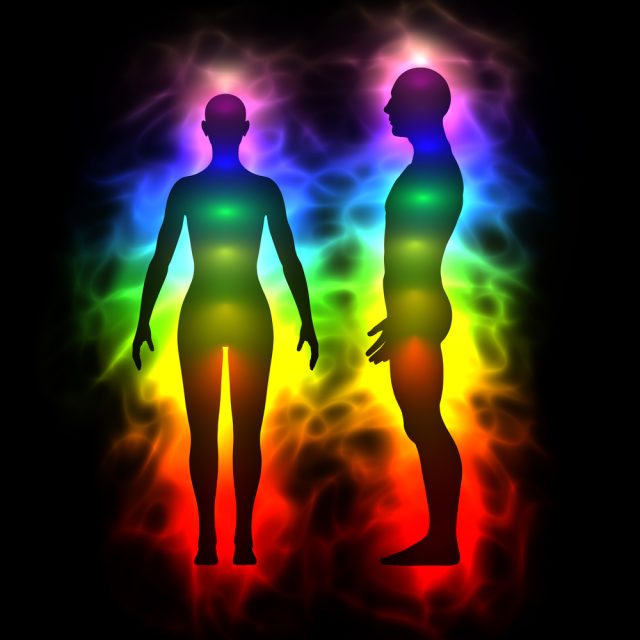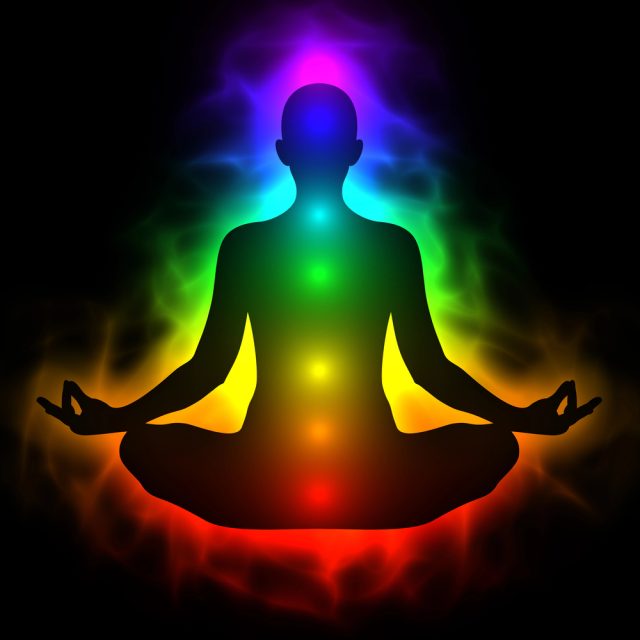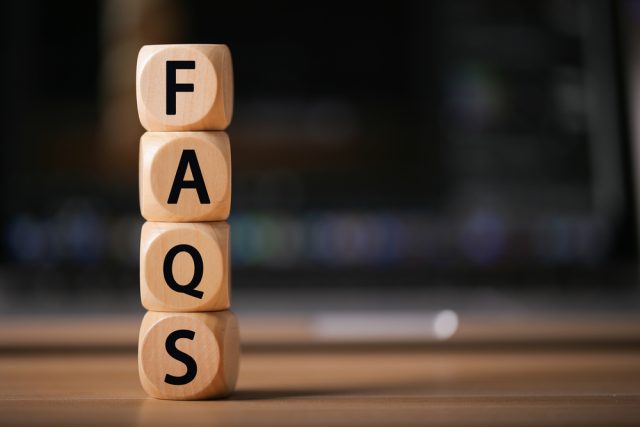By: Dominick L. Flarey, Ph.D, RN-BC, ANP-BC
Certified BioEnergetics Coach
 Article Objective: Explore the concept of the body’s aura, the history of aura photography, and the interpretation of aura colors. Understand the human body’s aura energy field in this academic article.
Article Objective: Explore the concept of the body’s aura, the history of aura photography, and the interpretation of aura colors. Understand the human body’s aura energy field in this academic article.
The human body’s aura energy field offers a unique glimpse into the energy that surrounds and emanates from living beings. It allows individuals to visually perceive their aura, a subtle electromagnetic field believed to be a reflection of their physical, mental, and spiritual well-being. This article explores the concept of aura, the history and evolution of aura photography, and how it works to capture these ethereal energies.
Key Takeaways
*Understanding the concept of aura and its significance in reflecting an individual’s well-being.
*Exploring the history and evolution of aura photography and its role in visualizing ethereal energies.
*Understanding the seven layers of auras and their connection to the body’s energy points.
*Interpreting aura colors and their significance in revealing personality traits, health, and energy levels.
*Challenges in understanding auras and the ongoing pursuit of interpreting and utilizing aura knowledge.
*Understanding the Human Body’s Aura Energy Field
*The Concept of Aura
 The aura is conceptualized as an energetic field that is said to envelop every living entity, including humans, animals, and plants. It is often depicted as a luminous halo or a light that radiates around the physical body. Although typically invisible to the naked eye, certain individuals claim to have the intuitive ability to perceive these auras, suggesting a sensitivity to subtle energy fields that transcend ordinary perception.
The aura is conceptualized as an energetic field that is said to envelop every living entity, including humans, animals, and plants. It is often depicted as a luminous halo or a light that radiates around the physical body. Although typically invisible to the naked eye, certain individuals claim to have the intuitive ability to perceive these auras, suggesting a sensitivity to subtle energy fields that transcend ordinary perception.
The aura is believed to reflect various aspects of an individual’s existence, encompassing physical, mental, and spiritual states. The study of auras, therefore, offers a window into the multifaceted nature of beings, proposing a complex interplay between the visible and invisible realms.
The aura’s significance extends beyond mere visual representation; it is thought to be indicative of the vibrational frequencies emitted by the entities it surrounds.
The following list outlines the purported properties of the human aura:
A reflection of one’s physical health and vitality
An indicator of emotional states and mental clarity
A representation of spiritual well-being and energetic balance
These properties, while not empirically validated, are central to various holistic and metaphysical practices that seek to understand and influence the human energy field.
History and Evolution of Aura Photography
Aura photography, a method to visualize the energetic field surrounding living organisms, has its roots in the late 19th century with the pioneering work of Nicola Tesla. The technique was revolutionized by Semyon and Valentina Kirlian, who developed Kirlian photography. This process captures the subtle electrical discharges, offering a glimpse into the unseen energies of objects and living beings.
The evolution of aura photography can be summarized in the following key developments:
Late 19th Century: Initial exploration by Nicola Tesla.
Mid 20th Century: Advancements by the Kirlians, making the phenomenon more widely recognized.
Late 20th Century: Technological improvements allowing for more detailed and color-rich aura images.
21st Century: Integration with digital technology, enhancing the clarity and accessibility of aura photography.
The progression of aura photography reflects a growing interest in the intersection of technology and metaphysical studies. It has transitioned from a scientific curiosity to a tool for personal insight and spiritual well-being.
Despite its advancements, aura photography remains a subject of debate among scientists and spiritualists alike. The challenge lies in reconciling empirical evidence with the subjective experiences of those who claim to perceive auras without technological assistance.
Seven Layers of Auras
The human aura is often visualized as an electro-magnetic field divided into distinct layers, each encompassing the physical body and extending outward. These layers are not just a static halo of energy; they are dynamic and reflective of an individual’s physical, emotional, and spiritual state. The concept of the seven layers of the aura is deeply rooted in ancient Hindu scriptures, which describe them as chakras, or the main energy points that run down the spine.
Each layer of the aura is associated with different aspects of our being:
The Physical or etheric aura plane, closest to the skin, signifies physical health.
The Emotional aura plane represents the fluctuating moods and feelings.
The Mental aura plane is linked to thoughts and logic.
The interplay between these layers can influence the overall color and intensity of the aura, which is believed to change over time, reflecting the current state of one’s life.
Understanding these layers is crucial for interpreting the subtle energies that they represent. However, it is important to note that the perception of auras and their layers is subjective and can vary greatly among individuals.
Overview of Aura Colors
The human body’s aura is a vibrant tapestry of colors, each hue offering insights into an individual’s emotional, mental, and spiritual well-being. The colors of the aura are dynamic, reflecting changes in one’s life and energy levels. These colors are intimately connected to the body’s chakras, or energy centers, and can provide a visual representation of a person’s current state.
An aura may display a variety of colors, each with its own significance. For instance, a red aura might indicate a person’s energetic and passionate nature, while blue could suggest clarity in communication and a valuing of individuality. It is crucial to recognize that interpretations of aura colors are not universal and can vary based on the observer’s perspective and the context of the reading.
The interpretation of aura colors is a nuanced practice, requiring an understanding of the complex interplay between the various hues and their associated chakras.
Below is a list of common aura colors and their general meanings:
Red: Energetic, passionate, strong
Orange: Outgoing, open, creative
Yellow: Optimistic, intellectual, confident
Green: Growth, balance, healing
Blue: Communication, individuality, sincerity
Indigo: Intuition, perception, inner peace
Violet: Spirituality, enlightenment, vision
These colors, and the insights they provide, can serve as a guide for individuals seeking to understand their own aura and the potential paths forward in their lives.
Interpreting Aura Colors
The interpretation of aura colors is a nuanced process that requires an understanding of the intricate connections between colors, emotions, and energy states. Each color in the aura is thought to correspond to specific aspects of an individual’s health, personality, and spiritual well-being. For instance, a dominant blue hue in one’s aura is often associated with clear communication and authenticity, reflecting the traits linked to the throat chakra.
The following list provides a brief overview of common aura colors and their associated meanings:
Red: Energetic, passionate, and strong
Pink: Nurturing, loving, and kind
Orange: Outgoing, open, and connected with creativity and sensuality
Blue: Genuine, communicative, and valuing individuality
It is essential to acknowledge that these interpretations are not absolute; aura colors can fluctuate with changes in one’s emotional, mental, and spiritual states.
Moreover, patterns within the aura can offer additional insights. For example, a vibrant pattern may suggest an active energy flow, while a subdued pattern could indicate a need for rest or healing. The task of interpreting these colors and patterns is complex, and often individuals seek the guidance of clairvoyants or aura readers to gain personalized insights.
Challenges in Understanding Auras
The study of the human body’s aura energy field presents a series of challenges that are both intrinsic and extrinsic to the practice. Interpreting the subtle nuances of aura colors is a complex task, requiring a blend of intuition, patience, and experience. The aura’s multilayered structure, with each layer potentially exhibiting different colors, reflects various aspects of an individual’s health and well-being. This complexity can make it difficult to draw precise conclusions about one’s physical, emotional, and spiritual states.
The interpretation of auras is not a straightforward process. It involves discerning the intricate interplay between different hues and their shifting patterns over time.
Furthermore, the ability to perceive auras is not uniformly distributed among individuals. While some claim to have a natural affinity for sensing and interpreting auras, others may require extensive practice to develop this skill. The table below outlines the key factors that contribute to the challenges in understanding auras:
Factor
Description
Perceptual Variability
Differences in individuals’ ability to see or sense auras.
Color Complexity
The multitude of colors and shades within an aura, each with potential significance.
Dynamic Nature
Auras can change over time, reflecting personal growth and life experiences.
Interpretative Subjectivity
The meanings ascribed to aura colors can vary across cultures and belief systems.
In conclusion, while the concept of auras offers a fascinating glimpse into the non-physical dimensions of human existence, the field is fraught with interpretative challenges. These obstacles underscore the need for a cautious and open-minded approach when engaging with the realm of aura energy.
Conclusion
In conclusion, the human body’s aura energy field offers a unique glimpse into the energy that surrounds and emanates from living beings. It allows individuals to visually perceive their aura, a subtle electromagnetic field believed to be a reflection of their physical, mental, and spiritual well-being. This article explores the concept of aura, the history and evolution of aura photography, and how it works to capture these ethereal energies.
Understanding the Concept of Aura
 The aura is an energetic field that envelops every living being, from plants to animals to humans. It is often described as a luminous halo or an aura of light that surrounds the physical body. While invisible to the naked eye, some individuals possess the ability to perceive auras intuitively. Aura photography has emerged as a powerful tool to bridge this gap, enabling people to visualize and explore their own aura. History and Evolution of Aura Photography, Aura photography has a fascinating history that dates back to the late 19th century. It was initially explored by Nicola Tesla and later gained popularity through the work of Semyon Kirlian. The technology has since evolved, providing valuable insights into the human energy field. By understanding the concept of aura, exploring the history and evolution of aura photography, and delving into the intricacies of capturing and interpreting the aura, one can unlock the secrets hidden within their own energy field. Whether used for personal growth, healing, or spiritual development, aura photography offers a fascinating insight into the energy within every living being. It allows individuals to visually perceive their aura, providing valuable information about their physical, mental, and spiritual well-being.
The aura is an energetic field that envelops every living being, from plants to animals to humans. It is often described as a luminous halo or an aura of light that surrounds the physical body. While invisible to the naked eye, some individuals possess the ability to perceive auras intuitively. Aura photography has emerged as a powerful tool to bridge this gap, enabling people to visualize and explore their own aura. History and Evolution of Aura Photography, Aura photography has a fascinating history that dates back to the late 19th century. It was initially explored by Nicola Tesla and later gained popularity through the work of Semyon Kirlian. The technology has since evolved, providing valuable insights into the human energy field. By understanding the concept of aura, exploring the history and evolution of aura photography, and delving into the intricacies of capturing and interpreting the aura, one can unlock the secrets hidden within their own energy field. Whether used for personal growth, healing, or spiritual development, aura photography offers a fascinating insight into the energy within every living being. It allows individuals to visually perceive their aura, providing valuable information about their physical, mental, and spiritual well-being.
Gaining insight into how your aura works is a powerful way to connect with your inner self. Your aura can reveal the energies within your physical, emotional, and spiritual bodies. Uncovering your aura’s meaning might surprise you, but it can be valuable in your healing journey. With a better understanding of auras and the meanings behind various colors, you can develop a foundation for interpreting your aura. Ultimately, this basic aura knowledge can enable you to explore your energetic expression consciously. Despite the growing availability of information, challenges may persist in identifying your aura’s meaning. If you’re struggling to understand it all, consider seeking professional guidance to gain a deeper understanding of your aura and its implications.
Frequently Asked Questions
What is an aura?
An aura is an energetic field that envelops every living being, from plants to animals to humans. It is often described as a luminous halo or an aura of light that surrounds the physical body.
How is aura photography related to understanding auras?
Aura photography allows individuals to visually perceive their aura, providing valuable information about their physical, mental, and spiritual well-being.
What are the seven layers of auras?
According to ancient Hindu scriptures, there are seven layers of the body called chakras, which are the main energy points in the body. Aura believers think that chakras can influence aura colors.
What do the different colors in a person’s aura reveal?
The different colors in a person’s aura may reveal personality traits, health, and current energy levels.
Can the color of a person’s aura change over time?
Yes, the color of a person’s aura can change over time and reflect where they currently are in their life.
How can understanding auras be valuable for personal development?
Understanding auras can provide valuable insight into the energies within the physical, emotional, and spiritual bodies, enabling individuals to explore their energetic expression consciously.
What challenges may persist in identifying the meaning of one’s aura?
Despite the growing availability of information, challenges may persist in identifying the meaning of one’s aura. Seeking guidance from a clairvoyant or expert may be beneficial.
How can one learn to see auras?
Learning to see auras requires understanding the concept of auras, exploring aura colors, and developing a foundation for interpreting auras. Seeking guidance from resources or experts can also be helpful.

